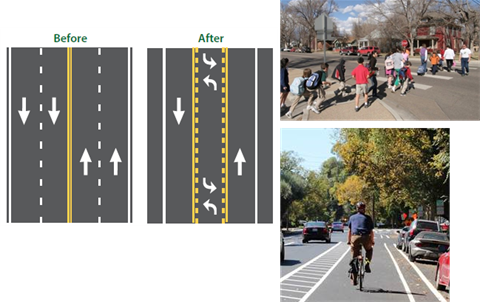Speeding and Safety Concerns on Otis Drive
Published on March 11, 2019

Speeding and Safety Concerns on Otis Drive – Preliminary Recommendations
The City of Alameda invites you to participate in a second community workshop to discuss preliminary recommendations for addressing speeding and safety while improving walking, bicycling, driving, and public transit on Otis Drive between Westline Drive and Willow Street.
What: Workshop #2, recommendations for Otis Drive safety improvements
Where: Wood Middle School multi-purpose room, 420 Grand Street
When: Wednesday, March 20, 6:30 pm
In September 2018, the City hired a consultant team, Parisi/CSW Design Group, to provide professional outreach, planning, and design services related to developing an improvement concept for Otis Drive. After analyzing community input received from a survey, at a community workshop, and from the Transportation Commission, City staff and the consultant team are recommending the following safety improvements as low-cost strategies to complete in 2020:
- Change the roadway to provide a three-lane street with one motor vehicle travel lane in each direction and a center two-way left-turn lane
- Provide bike lanes that would be separated from motorists with a striped buffer
- Add left-turn lanes and other improved lane markings at the Otis Drive/Grand Street intersection
- Install a crosswalk and a flashing beacon on Otis Drive at Larchmont Isle and at other locations
- Move bus stops to the far side of intersections, where possible, to improve pedestrian safety and add bus stop amenities, such as benches
- Remove the bus stops on Otis Drive at Heather Walk/Arlington Isle due to low demand
- Plant street trees in vacant tree wells
- Extend red painted curbs at intersections to improve visibility and bus operations
- Consider long-term treatments such as landscaped medians, bulb-outs, bicycle-protected intersections, roundabouts, and transit priority signals
Otis Drive is listed in the citywide transportation plan as a Vision Zero corridor with a goal to reduce citywide traffic deaths and severe injuries to zero. According to the Federal Highway Administration, the above types of traffic calming treatments can reduce speeds by up to five miles per hour and reduce collisions by at least 19 percent.
We invite you to participate in the Wednesday, March 20 community workshop, a Transportation Commission meeting on Wednesday, May 22, and a City Council meeting in July for concept approvals. If you have any questions, want to sign up for email updates, or want to express your input via email or phone, please contact Gail Payne at 510-747-6892 or gpayne@alamedaca.gov.